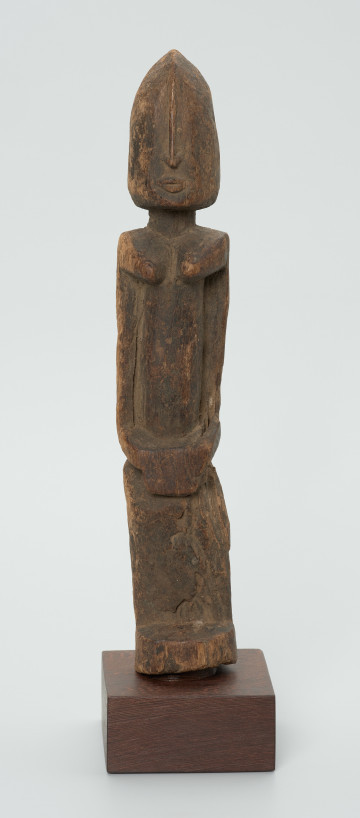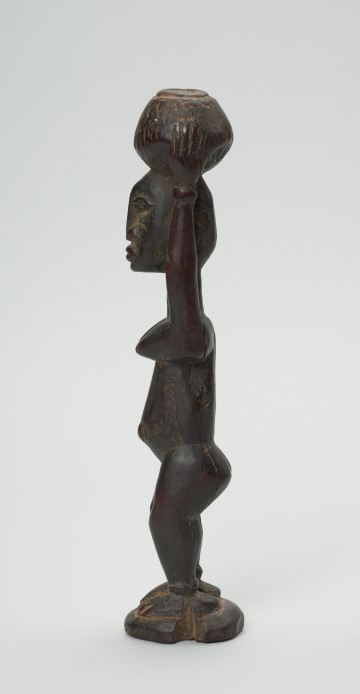
Figure - woman
między 1951 — 2000
National Museum in Szczecin
Part of the collection: Collection of Dogonian art
The Dogon women, like any other women in the world, care about their appearance and want to please men, although the latter declare that when choosing a candidate for a wife they are guided not by her beauty, but by her attitude and character. They even often say that he who chases beauty goes astray. The basic element of a woman's outfit is the skirt - a rectangular fabric with which the Dogon woman girds her hips. Ogotemmeli Dolo told Marcel Graule about the female skirt in these words: The first garment made of fabric was the woman's skirt. It was sewn when a woman took off her fibre dress. This outfit, made of four strips of fabric sewn together along the longer edges, is a sign of femininity and is worn so that the seams joining the pieces of fabric run horizontally. The skirt covers the body from the navel to the knees and is wrapped and tied without any fastening. The woman wears the skirt without fastening because her genitals are open. If it were otherwise, she could never be impregnated. Traditional cotton skirts are dyed navy blue with the vegetable dye indigo.The Dogon women complete their outfit with all kinds of ornaments: necklaces, pendants, bracelets and earrings. In the past they also wore light bracelets on their ankles and small, thin rings in their lips, but nowadays this happens rarely. Women's jewellery has changed over the last century. Back in the first half of the 20th century thick and heavy bracelets made of copper or iron predominated. Nowadays it is more common to find delicate and lightweight ornaments. Many of them are still made by Dogon smiths, but women also like to wear the characteristic ornaments of nomadic peoples and imported plastic ones.
Ewa Prądzyńska
Author / creator
Dimensions
cały obiekt: height: 28 cm, width: 4,5 cm
Object type
figure
Creation time / dating
Creation / finding place
Identification number
Location / status

między 1951 — 2000
National Museum in Szczecin

między 1951 — 2000
National Museum in Szczecin

między 1951 — 2000
National Museum in Szczecin
DISCOVER this TOPIC
Castle Museum in Łańcut
DISCOVER this PATH
Educational path